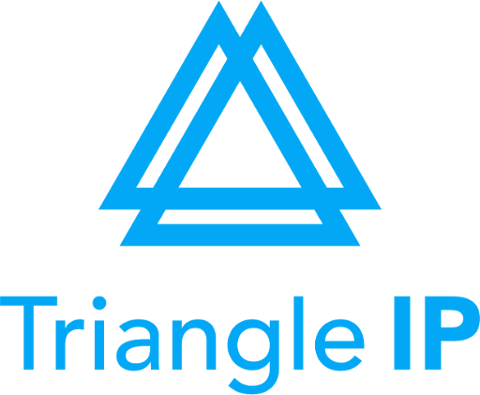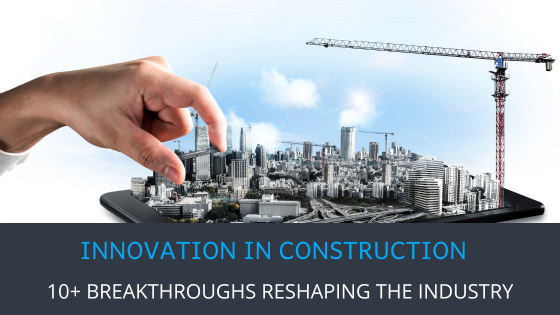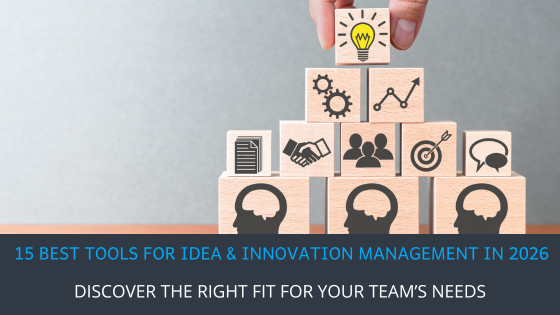| TL;DR: In this article, we’ll explore 10+ groundbreaking innovation in construction for 2025, ranging from 3D printing and autonomous robots to graphene-enhanced concrete. We’ll highlight their patents, real-world applications, and how these technologies are transforming sustainability, efficiency, and safety on construction sites. |
10+ Groundbreaking Innovations in Construction That Are Actually Working
Construction has evolved far beyond bricks and blueprints. Yet in 2025, the industry continues to face real, pressing challenges. Material costs have jumped by up to 11% across major sectors. Also, in the U.S. alone, nearly 439,000 more workers are needed to meet the growing demand.
That’s why innovation isn’t just nice, it’s essential. This inspired us to dive deep into the world of construction technology in 2025.
We sifted through patents, funding announcements, news stories, and real-world on-site builds to find solutions actually being used today. What we discovered is inspiring. From graphene-infused concrete that reduces carbon by 30% to autonomous dozers that run nonstop, these technologies are reshaping construction.
Here are 10+ examples of innovation in construction tackling labor shortages, emissions, and rising costs head-on.
1. ePredict Concrete Drying Predictor

Source- eGate
ePredict™ is a cloud-connected, real-time concrete drying and strength prediction tool. It uses wireless IoT sensors (“NSENS” probes) compliant with ASTM 2170 to monitor internal and ambient humidity and temperature continuously. The system sends data to the eGate cloud. Here, a patented algorithm forecasts when concrete will reach the required moisture level for safe flooring installation. It is available as early as 14 days after pouring.
The algorithm adjusts forecasts dynamically, even after rain or moisture events. It draws on over 150 million data points of concrete moisture readings. This enables contractors to optimize HVAC and drying actions remotely, avoid costly delays, and reduce unnecessary on-site visits.
Key Details
- Company: eGate Smart Building Innovation
- Location: Tampere, Finland
- Patent status: US Patent No. 11,982,666 granted in 2025 for the concrete drying prediction system
- Use cases: Optimizing moisture management before flooring install and continuous remote monitoring through IoT integration with Procore and Cramo
- Funding: Raising seed funding (~2024–25) for expansion (opened SEED round, seeking investors); previously bootstrapped with industry partnerships
- Awards/recognition: Secured a Notice of Allowance from USPTO (landmark patent) and highlighted for IoT innovation in construction scheduling
2. Glass Railing Waterproof Fastener
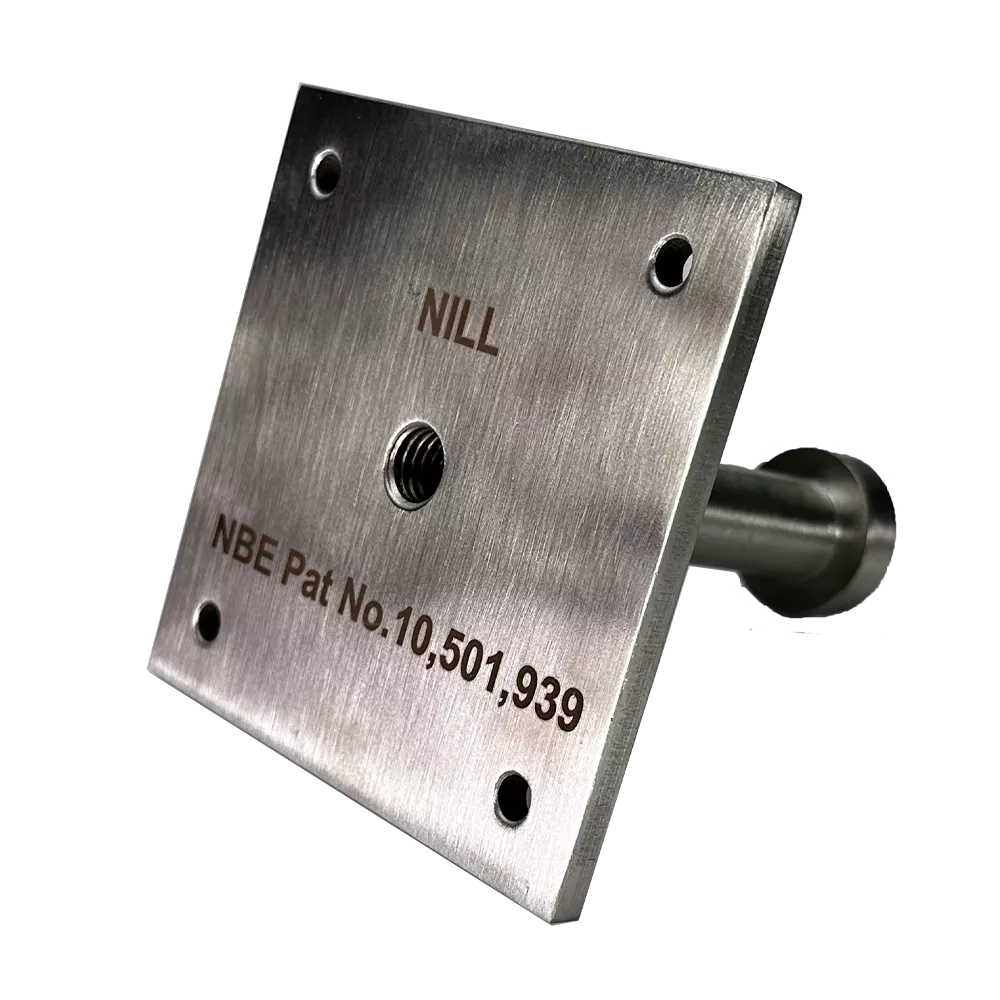
Source- Nill Building Solutions
The NILL Way® fastener system is a 100% waterproof anchoring system for exterior glass railings and facades. This solution uses a stainless steel flange and integrated membrane detailing to secure glass balustrades without any water penetration. It replaces “through-membrane” bolting methods and prevents leaks, rot, and concrete damage.
By ensuring a watertight seal at every attachment point, the system greatly improves the durability of balconies and rooftops. It also simplifies installation and maintenance for builders, using a patented mount that adds strength and modularity (“the Nill Way”).
Key Details
- Company: Nill Building Solutions (founded by Lance Nill)
- Location: Southampton, New York, USA
- Patent status: Multiple US patents granted protecting the waterproof fastener designs
- Use cases: Ideal for glass balconies, pool fences, deck balustrades, terrace guardrails where weather resistance and sealed joints are critical
- Awards/recognition: Their waterproof fastener range has earned ICC-ESR certification
Also Read: 12 Next-Gen Smartwatch Technology Innovations You Need to Know About in 2025
3. Concretene Dispersion System
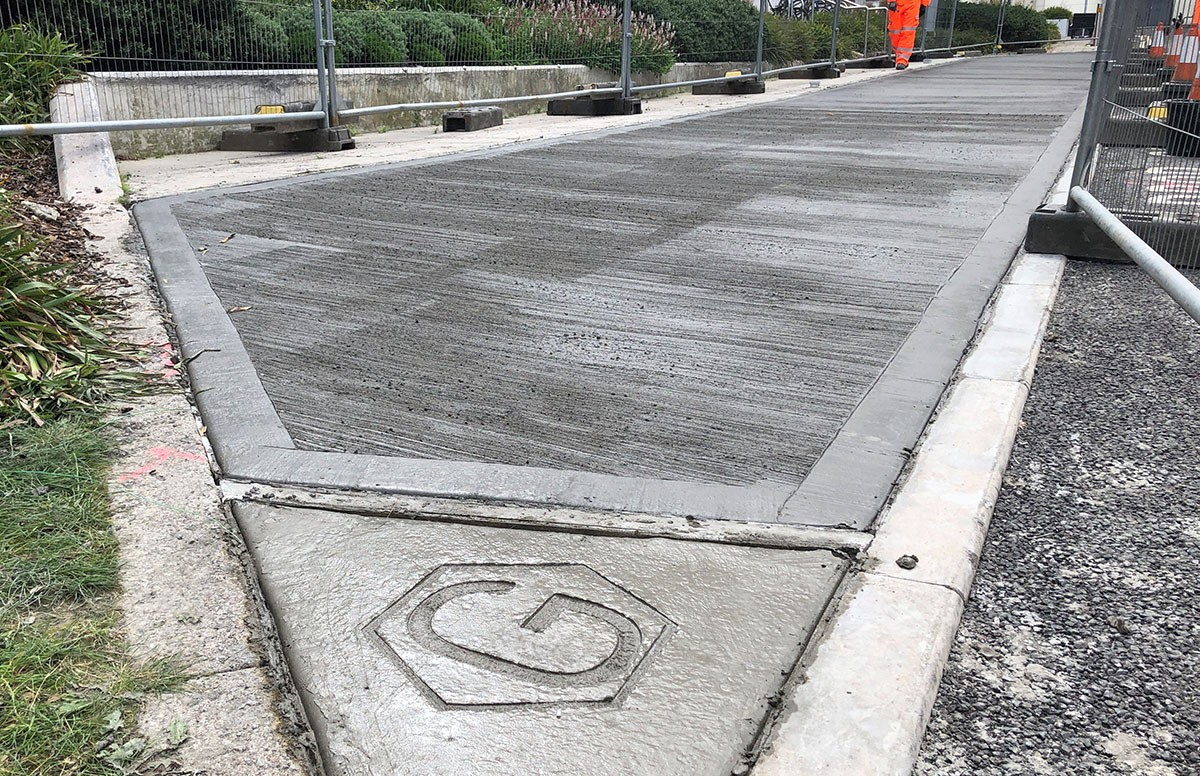
Source- The University Of Manchester
The Concretene dispersion system is a graphene-infused concrete admixture that strengthens and accelerates curing while cutting cement use. It mixes tiny graphene nanoplatelets into concrete, where they form a stable dispersion and improve the microstructure. This results in concrete that achieves the same strength using 20–30% less cement, cutting CO₂ emissions by a similar margin.
The graphene dispersion also boosts durability and potentially doubles the service life of structures. Concretene has been trialed in real building slabs, proving that housing and infrastructure can be built “greener” without sacrificing performance.
Key Details
- Company: Concretene Ltd. (Founded by Nationwide Engineering R&D and University of Manchester spin-off)
- Location: Manchester, United Kingdom
- Patent status: Patent application filed January 21, 2025, for graphene dispersion formulation
- Use cases: Used in structural slabs, parking decks, gym floors, and suspended decks, enabling strength gain in 7 days instead of 28
- Funding: Supported by Innovate UK grants and industry partnerships (no standalone VC round; backed by UK government funding)
- Market deployment: Over 300 m³ of Concretene poured in real-world settings like Manchester and Wiltshire, including gym floors and mezzanine decks
- Awards/recognition: Successful large-scale pilot pours (e.g. a full farm building slab in Cheshire) demonstrated in partnership with national suppliers
4. Smart DC Power Distribution System
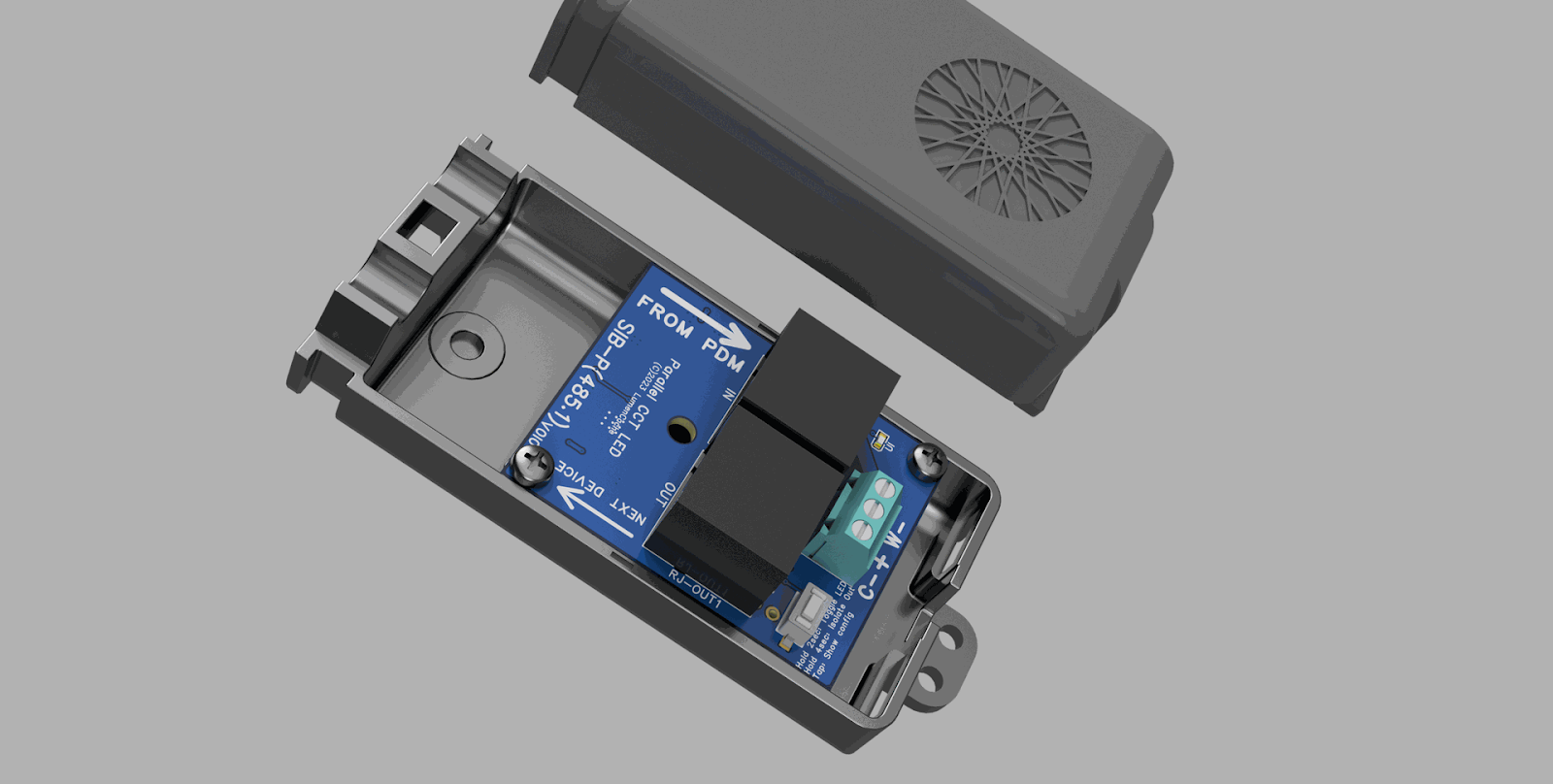
Source- LumenCache
LumenCache replaces conventional AC wiring with a low-voltage DC network carried over Cat‑5/Cat‑6 ethernet cables. It powers lighting, ventilation, sensors, and smart devices while cutting copper use by 60–90% and reducing labor.
The system centers on the Power Distribution Module (PDM) which is a passive backplane that supports up to 16 ports. Each port deliver up to 80 W (maximum 640 W per module) over standard ethernet wiring. Data, control, and power are merged at RJ‑45 ports, allowing modular zone control and seamless integration across multiple modules. Designed for plug-and-play, Class 2 safety compliance, most installations don’t require licensed electricians.
Key Details
- Company: LumenCache, founded in 2011 by Derek Cowburn, headquartered in Indiana, USA
- Location: Head office in Fishers/McCordsville, Indiana, USA, with R&D and manufacturing operations in Shenzhen, China
- Patent status: LumenCache holds granted patents, including US 8,742,680 B2, covering LED control systems and safe low-voltage DC power distribution in buildings
- Use cases: Residential and commercial buildings, smart homes, energy-efficient retrofits
- Awards/recognition: 2024 Brilliance Award for Major Systems at the TecHome Builder Summit
5. 3D‑Printed HempCon Panels
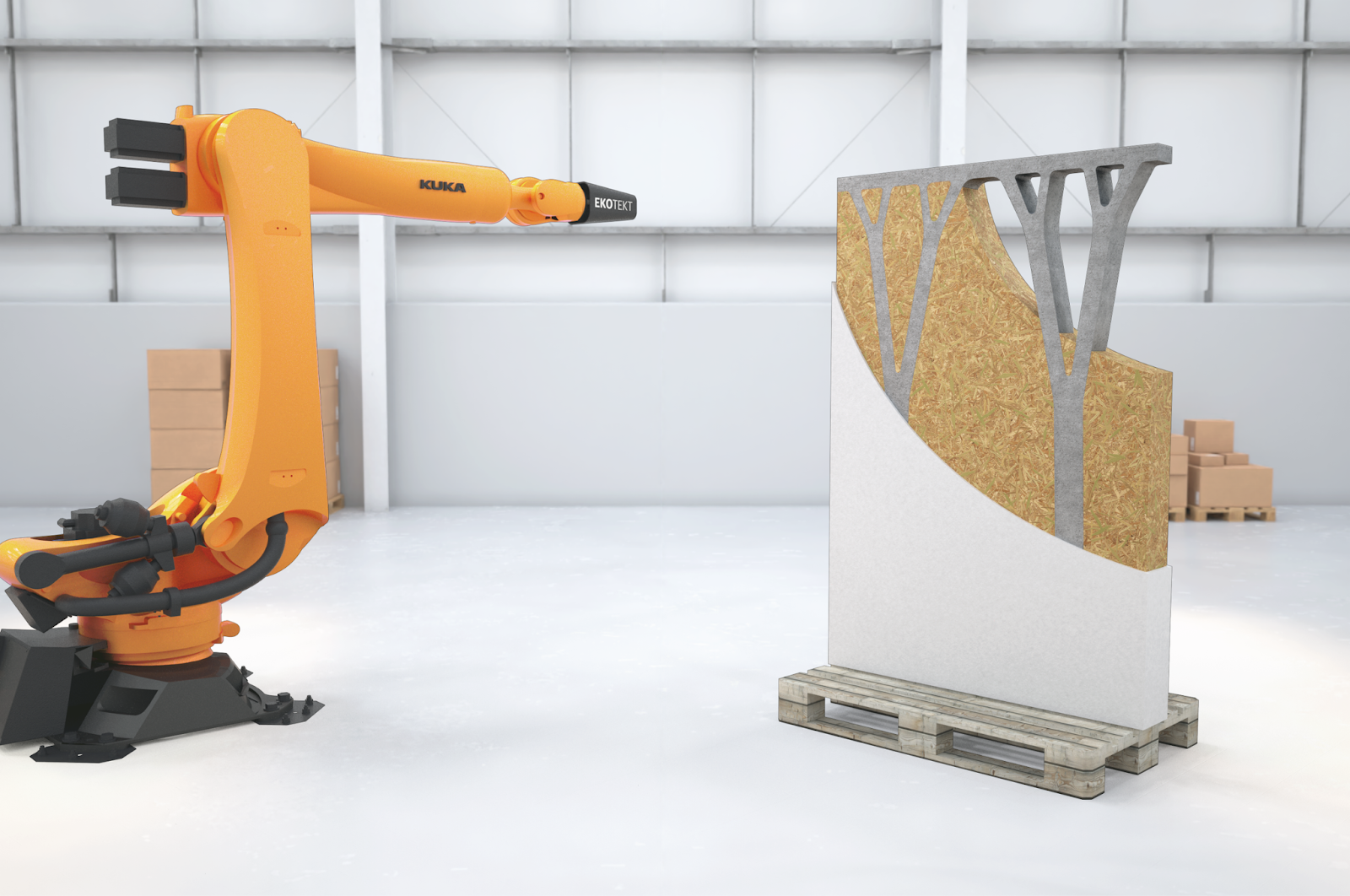
Source- EKOTEKT
HempCon 3D is a digital fabrication system that 3D-prints building elements (wall panels) using sustainable materials like hempcrete and clay. These panels are lightweight, and topologically optimized. They are manufactured in a factory and assembled on-site in as few as 8 days.
Each square meter of panel captures 14 kg of CO₂ and reduces concrete use by up to 70%. Its thermal mass and natural pores eliminate the need for separate insulation. The panels offer fire resistance, sound insulation, pest resistance, and earthquake flexibility, making them durable and climate-resilient.
Key Details
- Company: Ekotekt Oy
- Location: Helsinki, Finland (with production expanding to Aarhus, Denmark)
- Patent status: US patent awarded June 26, 2025, for its 3D printing method for HempCon™ panels
- Use cases: Load-bearing residential and commercial wall panels; prefabricated panels for homes, emergency shelters, and off-grid structures
- Funding: Supported by Urban Tech Helsinki, EIT Digital, Business Finland, Climate-KIC, and KIRAHub. Achieved TRL 6 with pilot projects underway in Finland and the Nordic region
- Awards/recognition: Featured by Catalyse New European Bauhaus as a flagship carbon-negative construction startup. Received strong industry attention at Building Green DK Aarhus 2025 for extraordinary innovation in construction industry
6. Spot Autonomous Construction Robot
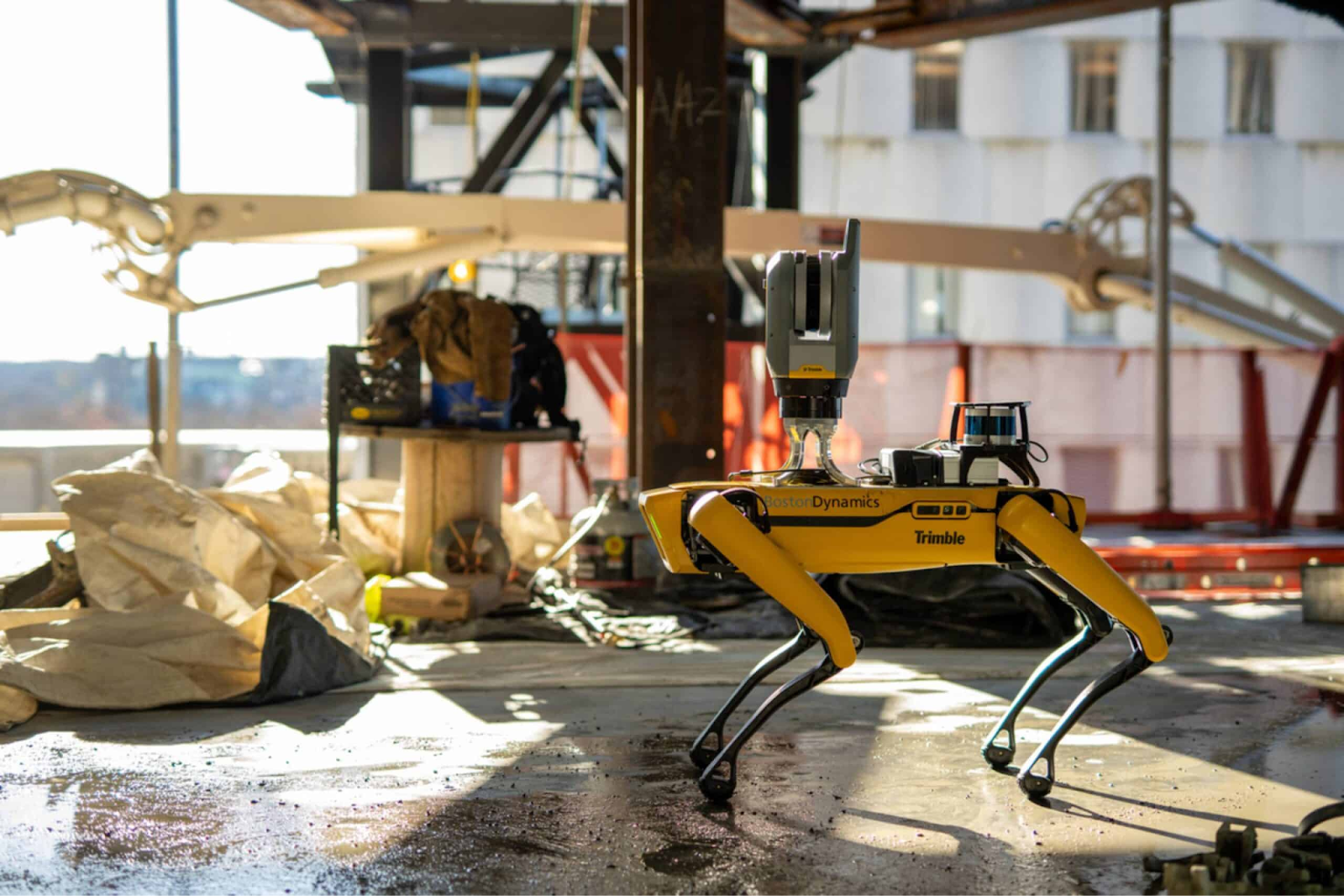
Source- Boston Dynamics
Spot is a four-legged autonomous robot innovation in construction as a mobile sensing and inspection platform. With its agility and autonomous navigation, Spot can patrol uneven terrain, and climb stairs. It can also carry payloads like cameras, LiDAR scanners, and other sensing tools.
On job sites, Spot performs 360° progress photography, LiDAR scans, and remote inspections on a set schedule. This reduces the need for manual site walks and improves efficiency. The data Spot collects feeds into BIM models and digital twins for real-time progress tracking and QA/QC. Able to operate 24/7 and in hazardous areas, Spot has become a new “crew member” on innovative construction projects.
Key Details
- Company: Boston Dynamics (acquired by Hyundai Motor Group in 2021)
- Location: Waltham, Massachusetts, USA
- Patent status: Received multiple patents in 2025 for Spot’s core mobility systems. These include US 12,214,497 for footstep contact detection and US 12,227,223 for obstacle-aware step planning
- Use cases: Automated site inspections and safety compliance checks (e.g. PPE enforcement). Progress mapping and 3D modeling of live construction zones. Remote monitoring on challenging infrastructure environments (e.g., stairs, uneven terrain)
- Market deployment: Operates on a lease model. In July 2025, Suffolk Construction deployed a $100K unit at a Long Island hospital project. It patrolled the site, ensured PPE compliance, mapped interiors, and saved ~1 hour of labor daily
Also Read: Green Technology Innovation: 15 Examples from Around the World
7. Modular Void Form System
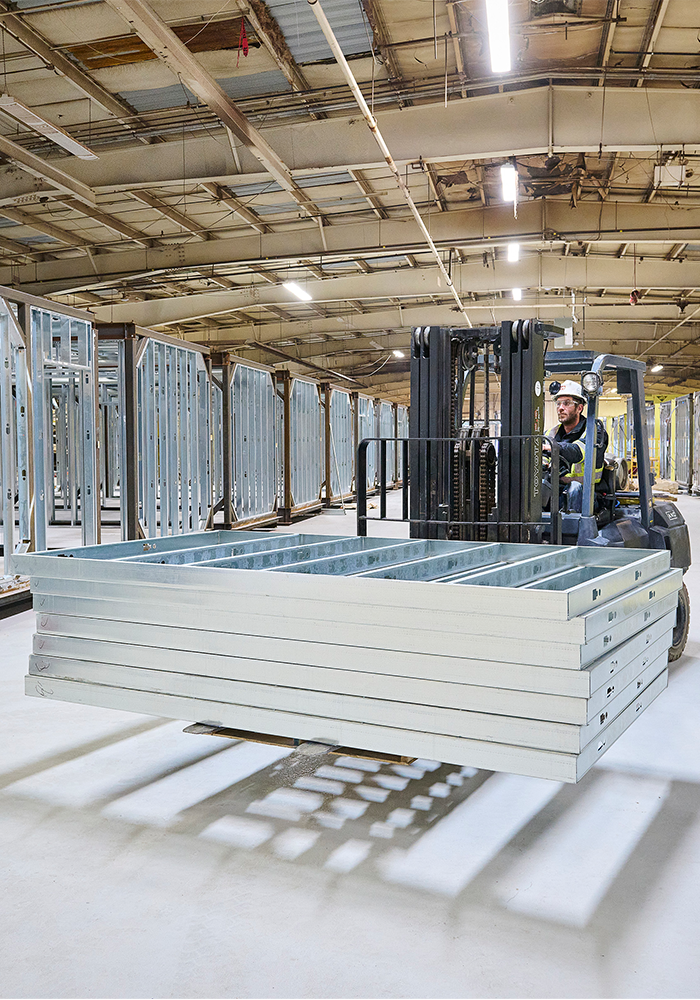
Source- ANC Group
The Modular Void Form System uses fully finished, stackable modules as permanent formwork in mid- to high-rise concrete structures. Manufactured in-factory with complete MEP, insulation, finishes, and structural steel, these modules are shipped and stacked on-site. Concrete is then poured into the voids between modules.
Once the concrete cures, the modules become a permanent part of the building. This eliminates the need for traditional formwork and reduces waiting time. It also enables developers to build multi-story buildings in weeks instead of months, even in complex seismic or hurricane zones. The system lowers formwork costs by up to 98% and compresses on-site timelines dramatically.
Key Details
- Company: ANC Modular (formerly Andrew Neill Construction)
- Location: Brantford, Ontario, Canada
- Patent status: US patent (SG10202111012Y) issued in March 2025; additional patents granted in South Africa; global applications pending
- Use cases: Long-span slabs, bridges, commercial buildings, precast panels
- Market deployment: Up to 63-story feasibility tested in high-risk regions like Los Angeles and Miami
- Funding: Privately held; growth funded through internal capital and strategic project partnerships
8. Modular Building Unit
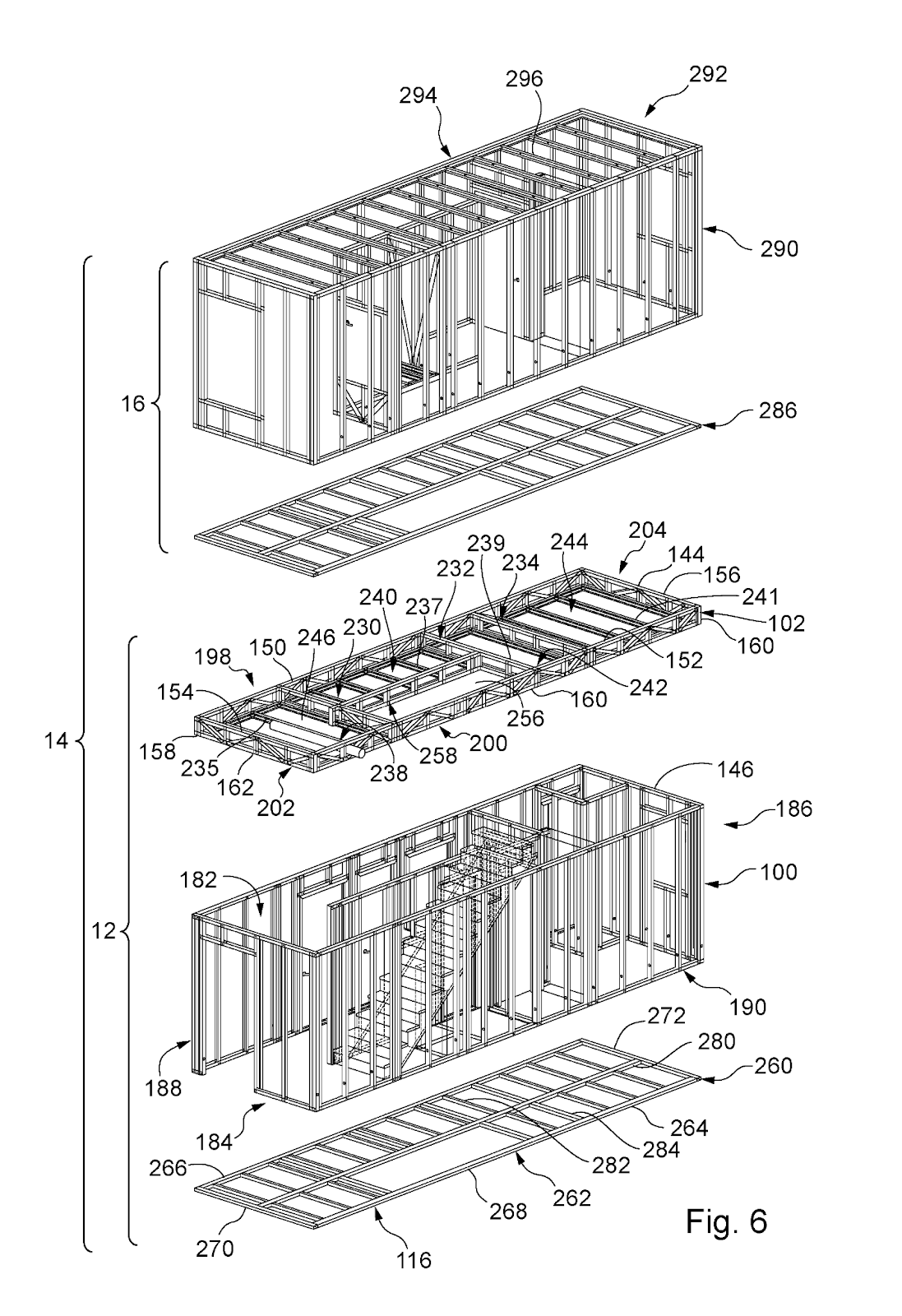
Source- WIPO
SANO has developed a hybrid modular building system that integrates volumetric modules with “service pods” (pre-fitted bathroom/kitchen units). This approach significantly accelerates housing construction. One such unit can be built in a factory with pods pre-installed. On-site, it connects to other units for fast multi-story assembly.
This approach, known as M-DOCK, provides modular cores that easily join together, creating high-quality, healthy homes with rapid deployment. The design helps address housing crises by enabling easy service module swaps and reducing on-site build time.
Key Details
- Company: Sano Development Limited
- Location: London/Cambridge, United Kingdom (operations in UK; expanding to US)
- Patent status: Published in early 2025 as WO 2025/008335 A1 under WIPO PCT system
- Use cases: Ideal for modular residential communities, site-expansion-ready office pods, emergency housing, and flexible retail kiosks
- Funding: Early-stage/Seed – gearing up to raise external funding in 2025 for global rollout
9. ADAR 3D Ultrasonic Sensor
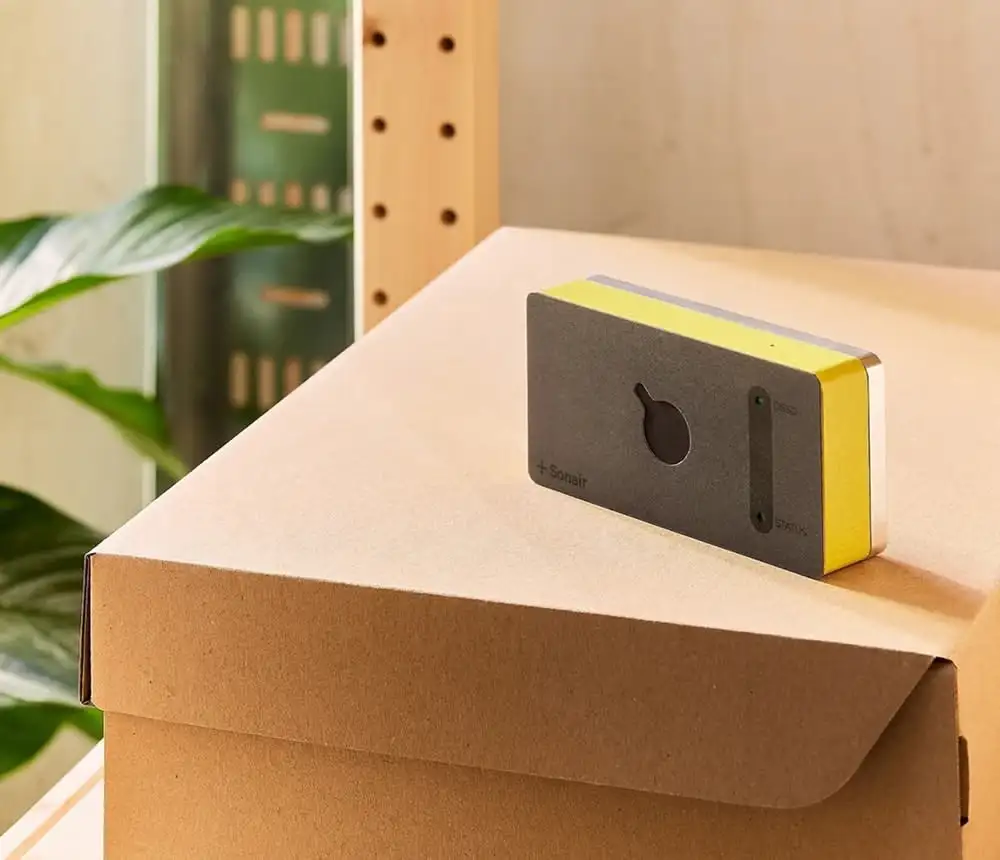
Source- Sonair
ADAR (“Acoustic Detection And Ranging”) is the world’s first 3D ultrasonic sensor for safe human–robot interaction. Using ultrasonic beamforming in air, it gives autonomous machines a 360° 3D view of their surroundings. It can detect objects up to 5 meters away.
Traditional 2D LiDAR only sees at one fixed height, like a person’s legs. ADAR captures full 3D data with a 180° × 180° field-of-view, detecting people and obstacles volumetrically. It creates a “bubble” safety shield around robots, greatly improving navigation in dynamic worksites. The sensor is also 80% cheaper and less sensitive to lighting or dust than LiDAR.
This innovation in construction debuted at Automate 2025 in Detroit and is rolling out to early adopters this year.
Key Details
- Company: Sonair (spun out of SINTEF MiNaLab)
- Location: Oslo, Norway
- Patent status: Fully patented, based on decades of SINTEF’s beamforming IP with coverage in Europe and North America. Notably a novel 3D depth-sensing air-based ultrasonic tech
- Use cases: Ideal for next-gen AMRs requiring safe 3D navigation.
- Funding: Raised $6.8M from Skyfall Ventures, RunwayFBU, SINTEF Ventures, and others in October 2024. The debut evaluation kit will ship mid‑2025
- Market deployment: Validated via Early Access with 20+ global partners, including Fuji Corporation and Swiss robotics OEMs.
- Awards/recognition: “Best of Sensors 2024” winner in the Automotive & Autonomous category; selected for the Automate Startup Challenge 2025
10. Vulcan 3D Construction Printer
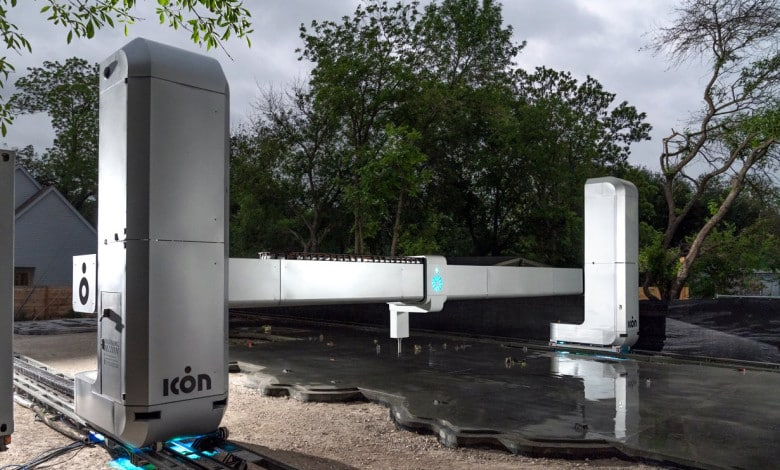
Source- Voxel Matters
Vulcan is a large-scale 3D construction printer that builds homes directly on-site using its custom cement mix, Lavacrete. It prints thick, layered walls at speeds of 5–10 inches per second, covering upto 3,000 sq. ft. per build. The resulting structures are strong, weather-resistant, and built to withstand mold, termites, and fire.
Most homes can be printed in just 24–48 hours. Vulcan works alongside ICON’s Magma mixing system and BuildOS software. Together, they combine robotics, materials, and automation to simplify and speed up construction.
Key Details
- Company: ICON Technology, Inc.
- Location: Austin, Texas, USA
- Patent status: ICON holds multiple patents, such as US 12,030,254 (granted July 2024): Feedback-driven layer geometry control
- Use cases: Residential: Modular & customizable homes (e.g., Wolf Ranch, Austin “House Zero”). Commercial: El Cosmico 3D hotel—43 units + 18 homes in Marfa. Institutional: DOD’s first printed barracks at Fort Bliss (5,700 ft² each)
- Funding: ICON raised US $56 million in February 2025, led by Norwest Venture Partners and Tiger Global. The funding is earmarked for the Phoenix multi-story printer and a low-carbon construction material initiative
- Market deployment: Building the world’s first 3D‑printed hotel near Marfa, Texas, with 43 units and 18 homes, set to open by 2026
- Awards/recognition: Secured a $57 M NASA contract to develop 3D-printed lunar habitats. Time Magazine’s Best Inventions honoree (the ICON 3D-printed home was celebrated as a breakthrough in affordable housing)
Also Read: 8 Best Intellectual Property Management Software in 2025
11. Bedrock Operator
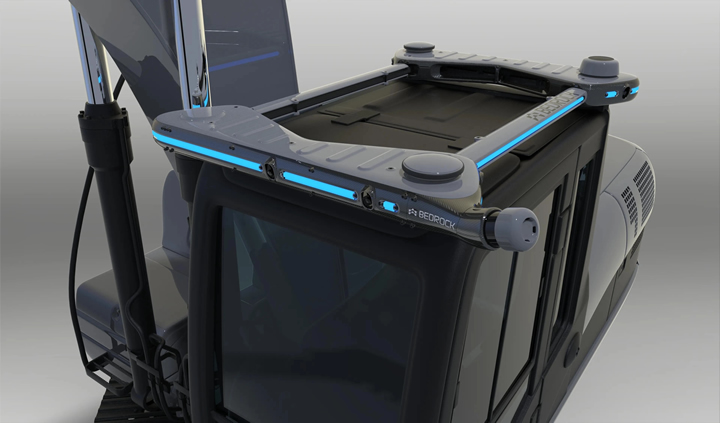
Source- Robotics Tomorrow
Bedrock’s Operator Kit equips existing heavy machinery, such as excavators, bulldozers, and loaders with autonomous capabilities. The system installs in under four hours and is fully reversible. It combines LiDAR, HD cameras, GPS, IMU, and onboard compute for centimeter-level precision and task automation.
It’s designed to run 24/7 and execute complex tasks like trenching and grading autonomously. This helps contractors scale operations even in tight labor markets. Former Waymo leaders built the platform using advanced machine-learning approaches seen in self-driving vehicles, optimized for messy, changing construction environments.
Key Details
- Company: Bedrock Robotics (founded 2024 by ex-Waymo and Uber Freight engineers, led by CEO Boris Sofman)
- Location: San Francisco, California, USA (testing in AZ, AR, TX, CA)
- Patent status: Filed PCT and US provisional applications for its autonomy kit. It covers sensor fusion, motion planning, and retrofitting methods, expected to publish by the end of 2025
- Use cases: Early deployments on-site with partners including Sundt Construction, Zachry Construction, Champion Site Prep, and Capitol Aggregates across Texas, and Arkansas
- Funding: $80M in combined Seed and Series A funding announced July 16, 2025, led by Eclipse (Seed). Also, 8VC (Series A), with further participation from Two Sigma Ventures, Nvidia’s NC Ventures, and others
- Market deployment: Commercial rollout scheduled for 2026, bringing autonomous earthmoving and grading capabilities to broader construction projects
What the Next Decade of Construction Might Look Like?
As we explored the most exciting examples of innovation in construction of 2025, one thing became clear: innovation is thriving. From sustainable materials to intelligent robotics, companies are reshaping how we build. But innovation alone isn’t enough. If not protected strategically, even the most groundbreaking ideas risk being lost or copied.
That’s why managing intellectual property early is critical. This is where the Triangle IP TIP Tool™ becomes a game-changer.
Here’s how the TIP Tool™ helps innovators secure their edge:
- Idea capture form: An intuitive, customizable form that facilitates enterprise-wide participation in innovation disclosure.
- Real-time collaboration: Enables simultaneous editing, commenting, and tagging, fostering seamless teamwork among inventors and managers.
- Patent pipeline visibility: Provides a visual, drag-and-drop interface to track ideas through stages like capture, vetting, drafting, and filing.
- Case analytics and cost estimation: Offers data-driven insights into predicted patent costs and success probabilities, aiding in informed decision-making.
- Counsel and examiner statistics: Delivers performance metrics of law firms and examiners, enhancing prosecution strategies.
- Automatic USPTO updates: Automatically retrieves status updates from the USPTO, reducing attorney workload and ensuring timely information.
- Dashboards: Role-specific dashboards provide a holistic view of idea submissions, patent filings, and team activities, helping identify bottlenecks and track KPIs.
If you’re building the future of construction, don’t let your ideas go unprotected.
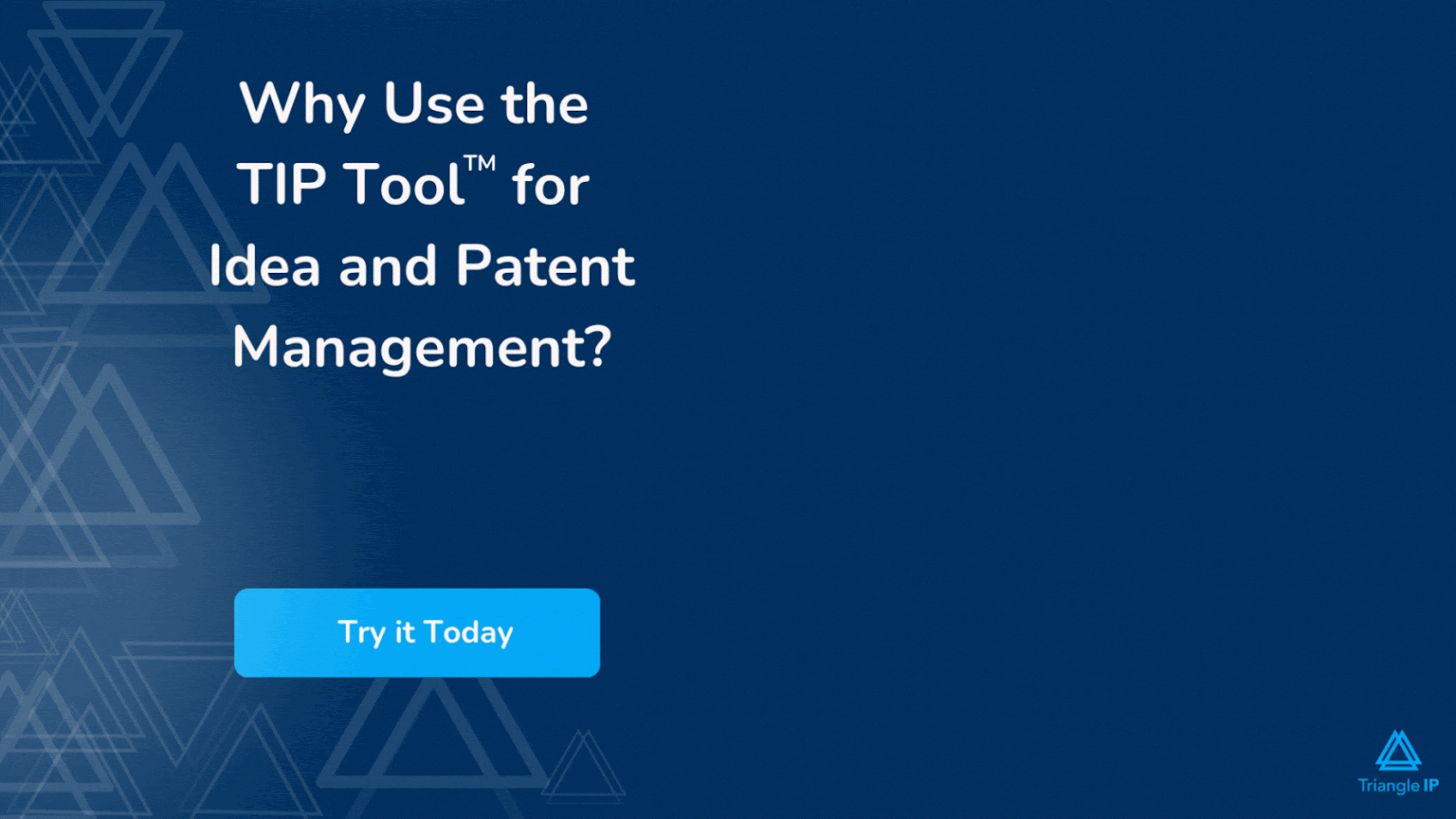
Try Triangle IP’s TIP Tool™ and turn your boldest innovations into valuable IP assets.
FAQs
1. How will AI change the construction industry in the next 5 years?
AI will automate project management, improve safety with real-time data analysis, enhance predictive maintenance, and enable smarter designs through generative algorithms, making construction processes faster, safer, and more efficient.
2. What is a digital twin in construction?
A digital twin in construction is a virtual replica of physical structures, created using sensors and real-time data. It allows for better monitoring, simulation, and optimization of building performance and maintenance.
3. What are the new technologies for construction?
Emerging technologies include 3D printing, drones, AI-driven project management, robotics, IoT for smart buildings, and modular construction, all aimed at increasing efficiency, reducing costs, and promoting sustainability.
4. What is the future of the construction industry?
The future of construction lies in automation, sustainability, and digitalization. With advancements in AI, robotics, and eco-friendly materials, construction will become more efficient, cost-effective, and environmentally conscious.
